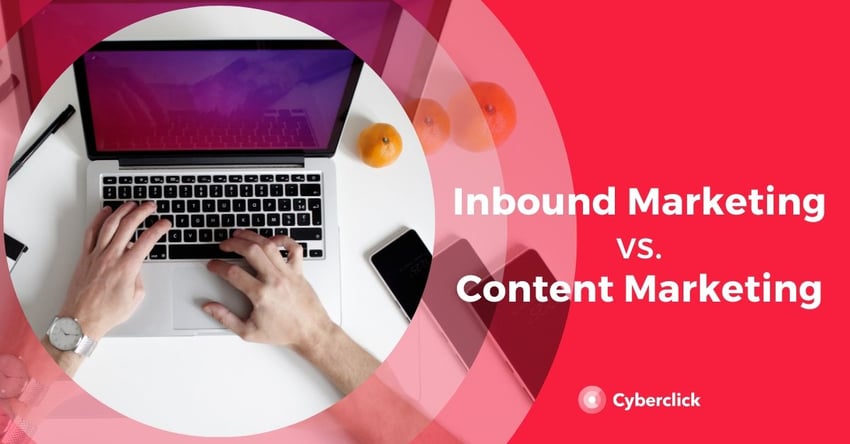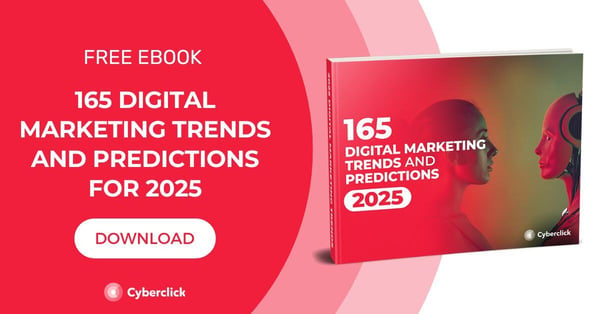By Laia Cardona, on 26 March 2020
Do you participate in inbound marketing or content marketing? Come to think of it, what exactly is the difference between inbound marketing and content marketing? Are they the same, or two totally separate methods?
There can be a bit of confusion between these two concepts, and it’s not difficult to see why some people get them mixed up. But if in order to execute your strategies effectively, it’s important to be very clear about the difference between these two marketing functions. So without further ado, let's examine the difference between inbound and content marketing.

Inbound Marketing vs Content Marketing
What Is Content Marketing?
As defined by Joe Pulizzi, content marketing is "a marketing technique for creating and distributing relevant and valuable content to attract and retain the attention of a well-defined target audience, with the aim of driving them to be future customers." With content marketing, you are providing free value to users in the hope of recovering that investment in the long term.
Modern content marketing has its origins in the late 19th and early 20th centuries, when brands began publishing corporate magazines with advice for their customers. Examples include the Jell-O’s cookbooks and Michelin Guides, which helped customers maintain their cars and find accommodation when they traveled.
What Is Inbound Marketing?
As for inbound marketing, it is a marketing methodology that is based on attracting customers and convincing them to come to you, rather than "invading" them with messages, typically done in traditional marketing or outbound marketing. Inbound is a method based on luring and attracting your ideal customers, accompanying them all the way from first hearing about your brand for the first time until they become fans of it. Its keys are to attract traffic to the brand's sites, turn visitors into qualified leads or contacts, and then automate the process so that these leads eventually become customers.
The origins of inbound marketing as we know it are now much more modern, as the concept did not arise until 2006. It was first mentioned by Brian Halligan and Dharmesh Shah, the founders of the famous HubSpot marketing solution.
Inbound Marketing and Content Marketing: Differences and Similarities
The relationship between inbound marketing and content marketing is that content marketing is one of the tools that inbound uses to attract traffic, but not the only one. By creating and publishing content in different formats in a structured way (content marketing), you can attract visitors to the page that you will then use to try to convert the guests into leads and then to customers (inbound marketing).
Here are some key difference between inbound and content marketing:
- It is possible to do content marketing within an outbound paradigm. That means its possible to do content marketing without doing inbound marketing. Some good examples are the famous 19th-century magazines I commented on before or newsletters that are sent as part of a massive campaign and not a lead nurturing strategy.
- Similarly, inbound marketing doesn't necessarily have to include content marketing among your strategies. Yes, it is true that it is one of the most common tools to attract traffic, and that all brands should have a complete website that will be useful to current and potential customers. But, content marketing is not 100% essential to create an inbound strategy.
- Content marketing alone cannot attract customers. Posting quality content serves to attract traffic to the brand's website or blog and can help you achieve virality and engagement on social media, but content on its own won't get people to become customers.
- Inbound marketing takes care of the entire process, from the initial attraction to the final conversion. Content marketing can only help in the first stage, which is attracting traffic to the brand's channels (usually to the website). But content marketing stops there. Inbound will apply a series of lead generation strategies aimed at getting the user to give their data and become a lead. Next, lead scoring (in which a value is assigned to the lead based on the information they have given) and lead nurturing (process by which a series of communications is sent to the lead in order to guide them in the direction of the purchase) comes into play. Finally, once the contact has become a customer, the inbound strategy can provide for a series of actions aimed at retaining them.
- Inbound marketing employs more techniques than just content marketing to attract traffic. These techniques include SEO (techniques to improve organic positioning in search engines and appear when users perform related searches), pay-per-click advertising or PPC (in which the customer only pays when the user visits their landing page) and email marketing (which is not only for the original traffic capture, but also for later stages of lead nurturing).
- Content marketing and inbound marketing require different skills. Content marketers tend to be more creative because writing, photography and video editing are critical. Oppositely, inbound requires professionals with a more technical profile, because they have to carry out a complete strategy that requires an advanced knowledge of programming, analytics, and marketing automation.




